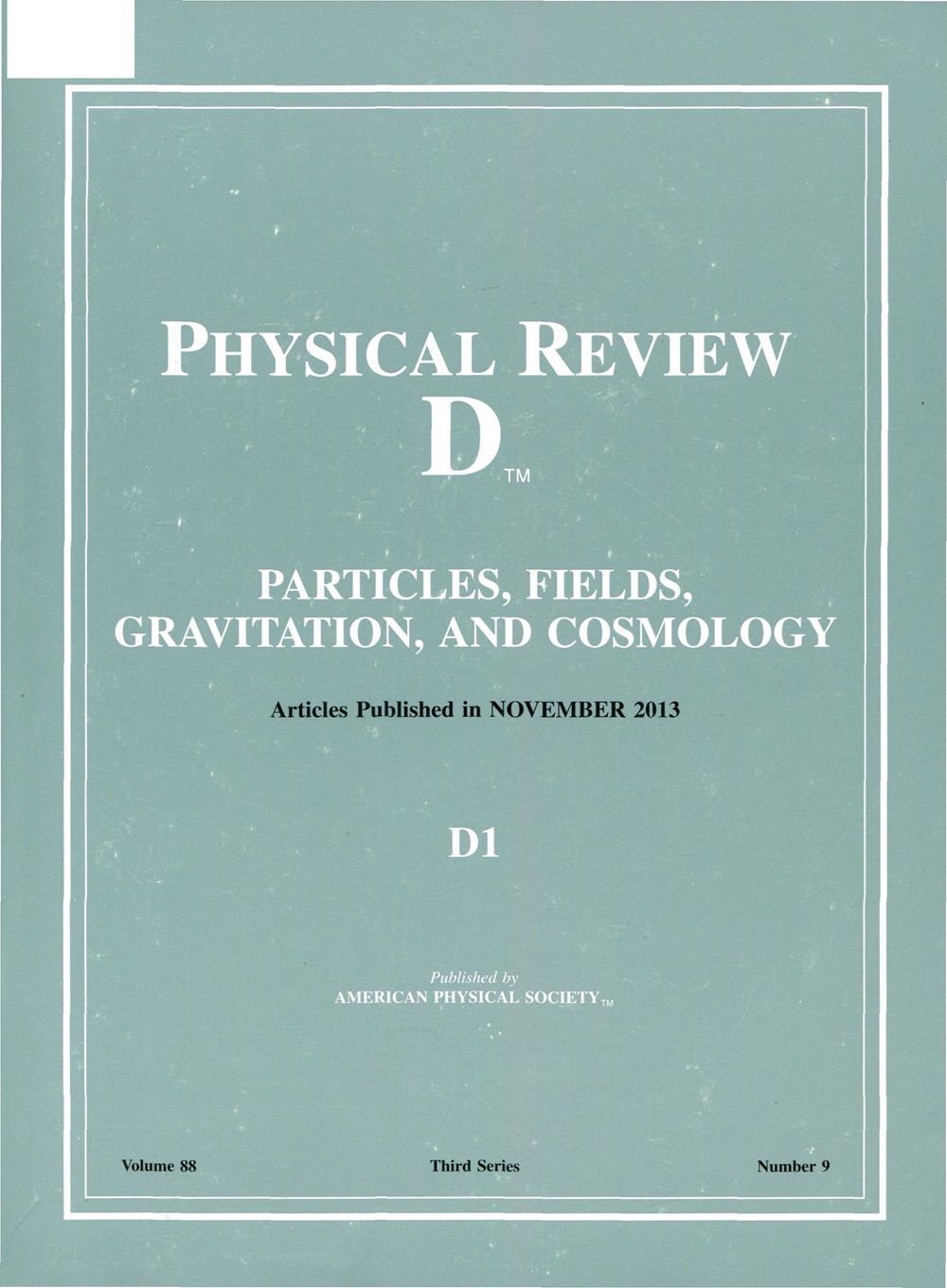运动物质偶极子的红移断层成像
IF 5.3
2区 物理与天体物理
Q1 Physics and Astronomy
引用次数: 0
摘要
由我们在宇宙遥远源的天空分布中的特殊运动引起的偶极各向异性是对标准弗里德曼-莱马本文章由计算机程序翻译,如有差异,请以英文原文为准。
Redshift tomography of the kinematic matter dipole
The dipole anisotropy induced by our peculiar motion in the sky distribution of cosmologically distant sources is an important consistency test of the standard Friedmann-Lemaître-Robertson-Walker cosmology. In this work, we formalize how to compute the kinematic matter dipole in redshift bins. Apart from the usual terms arising from angular aberration and flux boosting, there is a contribution from the boosting of the redshifts that becomes important when considering a sample selected on observed redshift, leading to nonvanishing correction terms. We discuss examples and provide expressions to incorporate arbitrary redshift selection functions. We also discuss the effect of redshift measurement uncertainties in this context, in particular in upcoming surveys for which we provide estimates of the correction terms. Depending on the shape of a sample’s redshift distribution and on the applied redshift cuts, the correction terms can become substantial, even to the degree that the direction of the dipole is reversed. Lastly, we discuss how cuts on variables correlated with observed redshift, such as color, can induce additional correction terms. Published by the American Physical Society 2025
求助全文
通过发布文献求助,成功后即可免费获取论文全文。
去求助
来源期刊

Physical Review D
物理-天文与天体物理
CiteScore
9.20
自引率
36.00%
发文量
0
审稿时长
2 months
期刊介绍:
Physical Review D (PRD) is a leading journal in elementary particle physics, field theory, gravitation, and cosmology and is one of the top-cited journals in high-energy physics.
PRD covers experimental and theoretical results in all aspects of particle physics, field theory, gravitation and cosmology, including:
Particle physics experiments,
Electroweak interactions,
Strong interactions,
Lattice field theories, lattice QCD,
Beyond the standard model physics,
Phenomenological aspects of field theory, general methods,
Gravity, cosmology, cosmic rays,
Astrophysics and astroparticle physics,
General relativity,
Formal aspects of field theory, field theory in curved space,
String theory, quantum gravity, gauge/gravity duality.
 求助内容:
求助内容: 应助结果提醒方式:
应助结果提醒方式:


